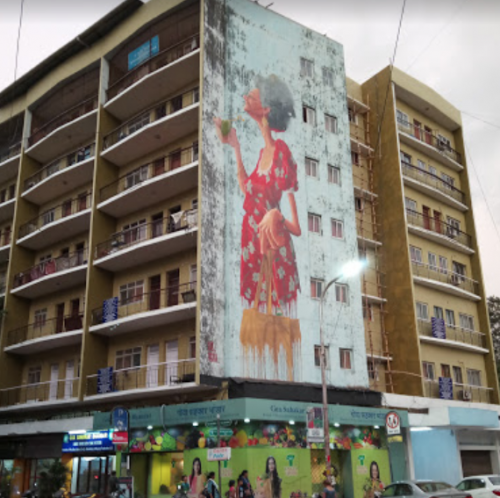
PANAJI
It meant a lot of different things to the kids and teens of those years, today seniors in their 60s and seventies.
Indisputably the most iconic of all buildings built in Goa after the December 1961 liberation, the Junta House along the 18th June Road in Panaji, was used by school kids and teenagers as their playground for 'hide-and-seek', chor-police and such other games.
To others more senior in age, it was their workplace as it housed several government departments, including the transport department and the Civil Supplies Department. Being among the government departments that attract maximum daily footfalls, large number of people visited the building on a daily basis.
Now, after more than six decades of its existence, the six-storeyed iconic building is a pale shadow of its majestic past and is to be demolished along with the foodgrain godowns adjacent to it to be redeveloped by the National Building Construction Corporation (India) Limited which won the Goa government's contract last year.
"It was new and the biggest edifice we had ever seen. It was a novelty to us. We used to run there during the 15-minute interval in our school (Don Bosco) and play a couple of rounds of hide-and-seek or chor-police," said Rui Ferreira, retired banker who now also practices law.
Ferreira said their daily visits to the Junta House then had led them to make friends with the families of some of the out-station bureaucrats living in the residential flats on the upper floors.
"Mostly families of IAS officers posted here used to live in these flats," Ferreira said.
Another prominent Panjimite and senior citizen Satish Duclo recalled the days and months during which the Junta House was being constructed.
"The rest of the city was calm and quiet with not much activity but this square was bustling with activity with construction workers and dozens of onlookers," Satish, who is better known for his performances as a magician with the stage name 'D Satish' said.
According to Satish, the contractor who constructed the building was M S B Caculo. A few years later the 'annexe' building was built by the Tamba Brothers, he added.
The sixth floor of the building housed the Swami Vivekananda Hall, which served as the venue for several government functions and also community organised events as it was the only such venue apart from the Institute Menezes Braganza hall in those days, Satish added.
Meanwhile the Association of Friends of Astronomy which operated from the terrace of the iconic building will have to now look out for a suitable, alternative space to operate from.
The government's decision to demolish the building and redevelop it has halted the Association's plans to establish a 'solar museum' but its members insist they will persevere with the plan and establish the museum when they find alternative accomodation.